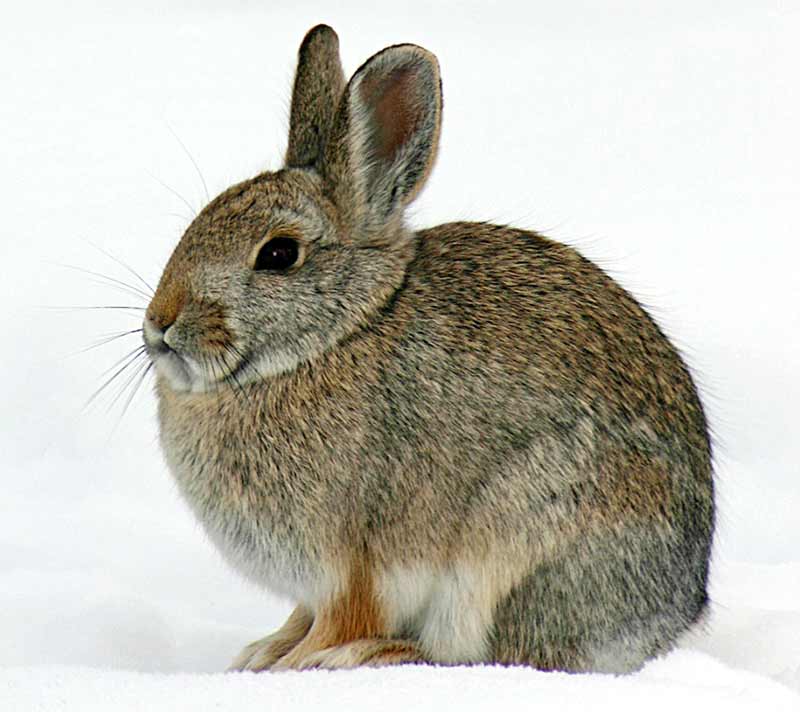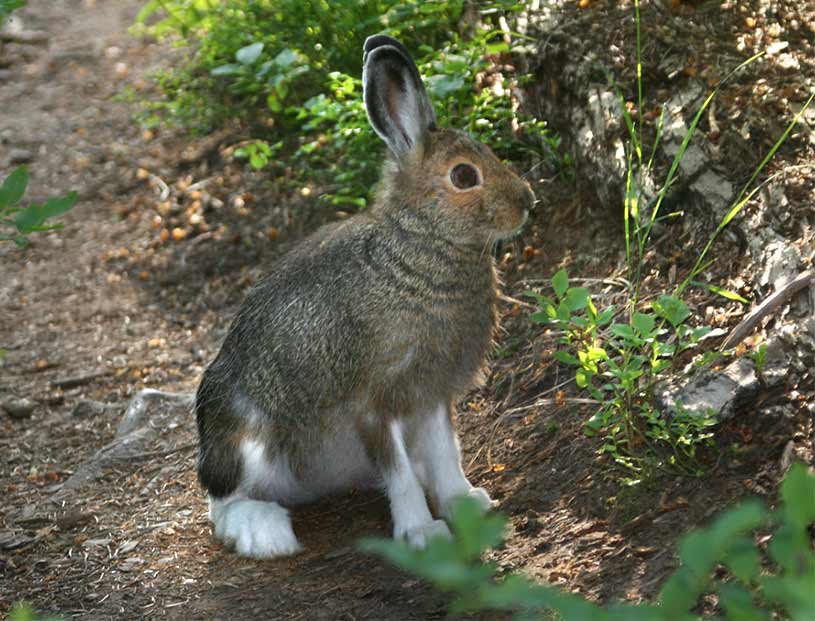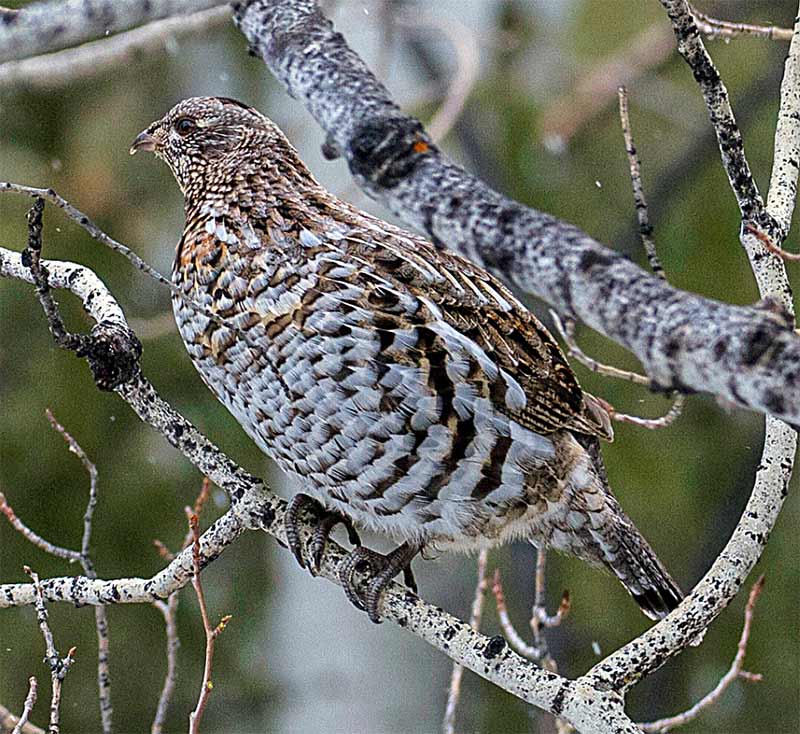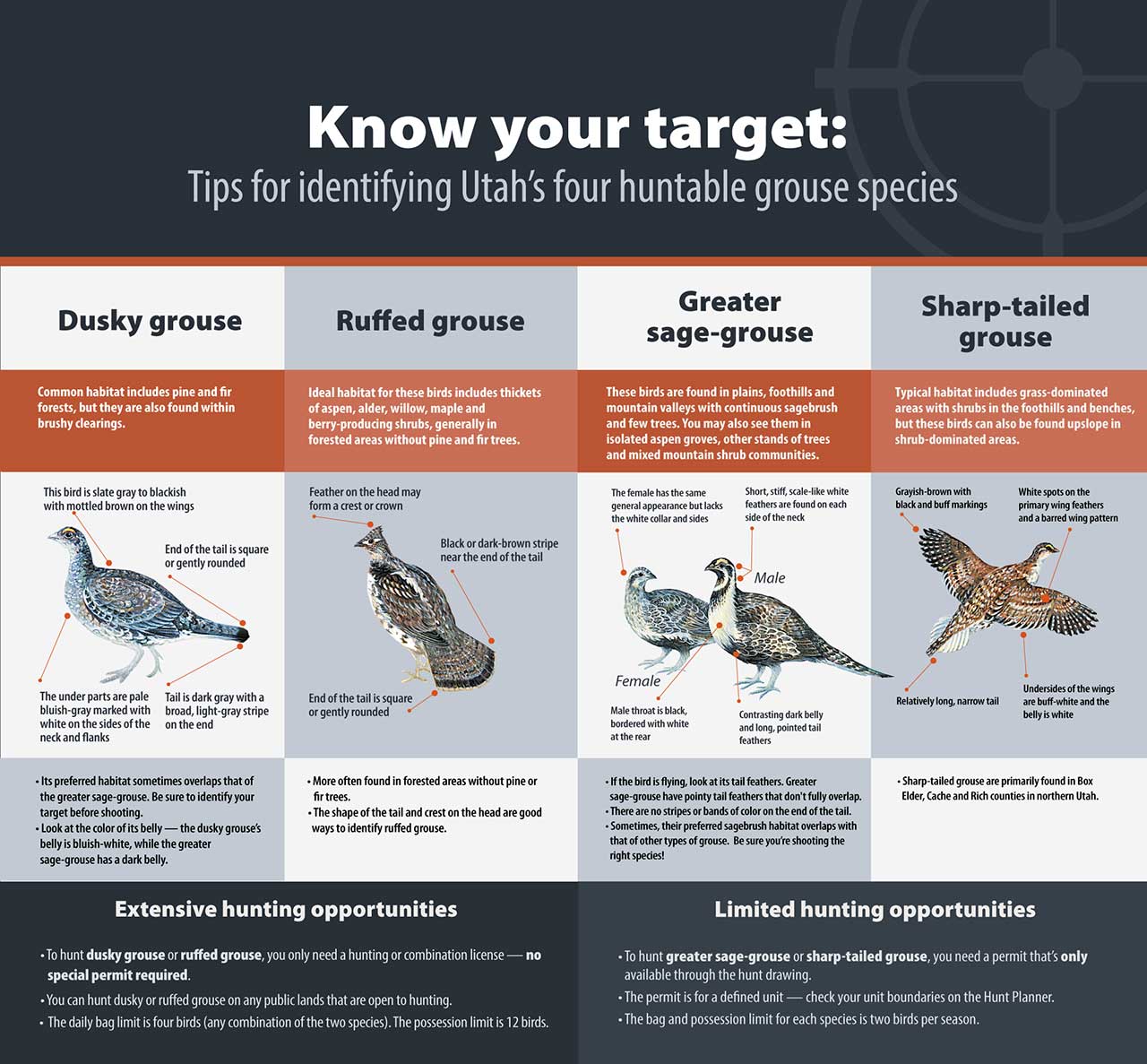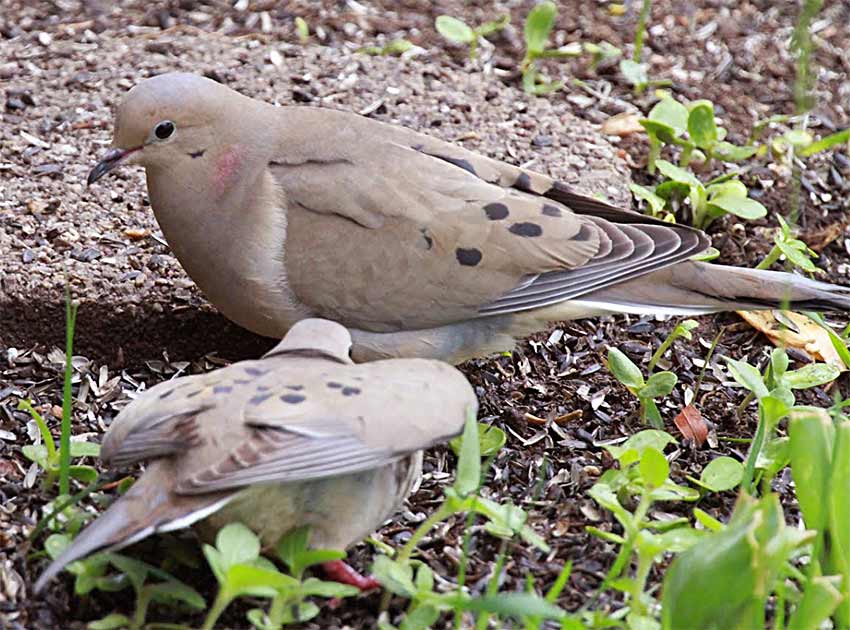Hunting tips for rabbits, hares, forest grouse and doves
Knowledge and preparation increases your chance of a successful hunt
Hunting upland game can be fun and rewarding, but much depends on knowing how to find them. We've put together a few tips to help you hunt three interesting species.
Cottontail rabbits
To find rabbits in lower elevations, look in the bottom of valleys that have tall sagebrush and deep, loose soil that have burrows the rabbits can use. If you're in mid-elevation areas, look for hillsides that have large boulders, thick sagebrush or other thick vegetation the rabbits can hide in.
Consider hunting early in the morning and late in the afternoon. That's when the rabbits are the most active and are away from their resting areas. Early morning and late in the afternoon are prime times for rabbits to feed.
Hunting tips
Shotguns and small-caliber rifles, such as the .22, are perfect firearms to hunt rabbits with.
If you're hunting with a small-caliber rifle, finding a spot that's higher in elevation than the area around it — and then sitting down, scanning the surrounding area and waiting for the rabbits to appear — is a good choice. It's critical to hunt early in the morning or late in the afternoon, when the rabbits are most active and moving around.
If you'd like to walk and flush rabbits out of cover, a shotgun is the best firearm to use. If you're hunting with one or more people, form a line — spacing each hunter about 20 yards apart — and then walk through areas that look promising. Be ready to click your safety off; a flushing rabbit doesn't give you much time to shoot!
Snowshoe hares
Snowshoe hares live in conifer forests that are more difficult to access than areas where cottontails live. But if you journey into their habitat, you should find them.
Snowshoe hares live in high-elevation stands of conifer and aspen trees. Stands of young pine trees — at least 8,000 to 9,000 feet in elevation — are especially attractive to hares.
In Utah, hares live along the Wasatch Plateau (the range of mountains that run north to south, through the center of the state), and east into the Uinta Basin.
Waiting for the first snowstorm of the year, and then looking for the hares' unique footprint, is one of the best ways to find them. The print looks like a miniature snowshoe.
Snowshoe hares don't have a large home range. If you find an area that has lots of tracks in it, there's a good chance a hare is hunkered down in some vegetation nearby.
Snowshoes or snowmobiles are often required to hunt snowshoe hares after the snow falls.
Hunting tips
Small-caliber rifles and shotguns are great firearms to use. Move slowly through the hares' habitat, watching for the outline of a hare and its dark black eyes. Kicking brush piles can also cause hares that are hiding to flush into the open.
Forest grouse
Two species of forest grouse — dusky and ruffed — live in Utah. DWR biologists don't conduct formal grouse surveys, but they do observe the birds while working in the field. And they like what they're seeing this summer.
Ruffed grouse are found along the Wasatch Plateau (the range of mountains that run north and south, through the center of the state), and east into the Uinta Mountains.
Ruffed grouse are usually found either in, or close to, stands of aspen trees. They're especially attracted to stands that have lots of young aspens in them. Aspen stands that have shrubs with berries and a water source nearby are especially attractive to ruffed grouse.
Dusky grouse are more widely distributed in Utah than ruffed grouse. Some of the best places to hunt for dusky grouse include Cache County and the Wasatch Plateau. Areas near Cedar City in southwestern Utah, such as Cedar Mountain and the Pine Valley area, also hold good numbers of grouse.
Isolated mountains in western Utah also hold good numbers of dusky grouse, but the areas where the grouse are found on those mountains can be challenging to get to.
Dusky grouse live higher in elevation than ruffed grouse. A good spot to look is the zone where aspen tree stands transition into conifer forest. Ridgelines that have pine and Douglas fir trees on them are also attractive areas.
Because ruffed and dusky grouse spend most of the day on the ground, you can find birds any time of the day. However, if you want to hunt grouse when the birds are most active and accessible, hunt early in the morning when the birds are feeding. After they've filled their crops with food, they retire to heavier vegetation to rest. They won't become active again until later in the afternoon, when they feed one more time before flying into trees to roost for the night.
If you have a dog, mid-morning can be a great time to hunt. By the time mid-morning arrives, the birds will be done feeding. If you wait until then, the birds will have left plenty of scent on the ground for your dog to follow.
Hunting tips
If you're hunting without a dog, move slowly and stop regularly to watch and listen. Grouse will often hunker down and let you walk past them. Stopping occasionally can make a grouse that's nearby nervous and cause it to flush. Always be ready to shoulder your gun and shoot; grouse flush quickly and gain speed fast.
Mourning and white-winged doves
The dove hunt is another great hunt to take your kids on. The areas where doves live are easy to access, and the weather during the dove hunt opener is usually warm and pleasant. Make sure you bring plenty of shotgun shells.
Finding doves
To find the greatest number of doves, look for fields with grain in them — such as wheat or barley — with water holes nearby. Grain fields that have a water hole near them can be dove-hunting hotspots.
Another thing to look for are concentrations of trees near grain fields and watering holes. Doves will fly into these areas before roosting for the night.
Box Elder, Millard and Utah counties are three of the best counties in Utah to hunt doves. Southern Utah is also a good choice. The climate in southern Utah is warmer, so the birds tend to stay a little longer in that part of the state."
If the area you'd like to hunt is private property, you must have written permission from the landowner to hunt the area.
Hunting tips
The key to hunting doves is locating the areas they're using, and then setting up along flight paths the birds are using. As doves fly past, they provide quick, challenging shots. Bring plenty of shotgun shells loaded with No. 8 or No. 7-1/2 shot.


